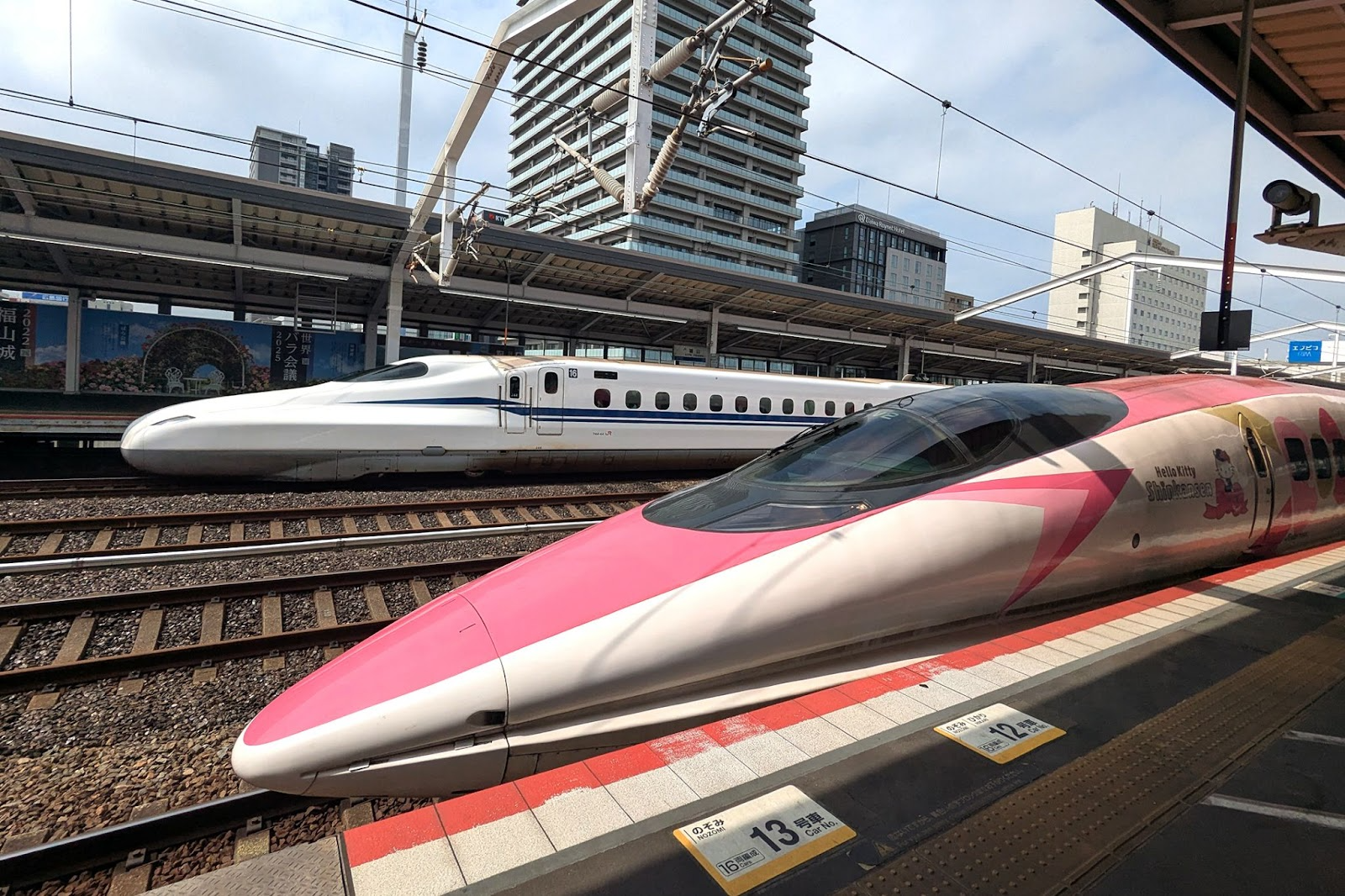If you’re planning a family vacation in Japan, this guide offers practical tips through two lenses: wellness (mind–body well-being) and sustainability (care for people and planet). Understanding how Japan’s idea of “having fun together” coexists with the Western emphasis on “personal fulfillment” will deepen your trip—the more you grasp this difference in perspective, the richer your experience becomes. By the end, you’ll have clear ideas for turning a family visit into more than sightseeing: a restorative escape that also respects local culture and nature.
Three Fundamentals to Know Before Planning a Family Vacation in Japan
First, here are three essentials to anchor your planning. Keep in mind a cultural backdrop that shapes daily life in Japan: “the rhythm of living shifts with the seasons.” For instance, making hanami (cherry-blossom viewing) or momijigari (autumn-foliage viewing) the main purpose of an outing expresses the Japanese sensibility of savoring nature itself.
(1) Best Seasons:
In general, spring (March–May) and autumn (September–November) offer mild weather and striking scenery—the classic “best seasons” to visit (*1). Cherry blossoms in spring and blazing foliage in autumn bring Japan’s landscapes to life, though these periods draw large crowds. To sidestep congestion, think about “timing your travels around events.” Visiting for summer festivals or winter snow festivals—seasonal traditions you won’t find in quite the same way in the West—lets you feel a region’s heartbeat. If you want unrushed days together, consider “off-season on purpose,” such as Hokkaido’s expansive nature in summer or snow-view hot springs in winter.
(2) Major Airports and Getting Around:
Japan’s main gateways are Tokyo (Narita and Haneda) and Osaka (Kansai International), with additional international routes to Nagoya (Chubu), Fukuoka, Okinawa (Naha), and others across the country (*2). Narita offers abundant long-haul flights; Haneda sits closer to central Tokyo with extensive domestic and international connections; Kansai is ideal for Kyoto–Osaka access.
On land, the shinkansen is your chance to feel Japan’s “culture of punctuality.” If a train is a few minutes late, staff will offer a deep apology—something that can surprise travelers from countries with a more relaxed sense of time. The high-speed rail network is exceptionally precise and comfortable, and facilities are often stroller-friendly, so even families with infants can travel with confidence.

(3) Travel Insurance:
Always take out travel insurance to prepare for illness or injury. A JNTO survey notes that about one in twenty travelers experiences a health issue while abroad. Japan’s medical care is advanced but can be costly; insurance is a wise safeguard (*3). Japan’s “high quality at high cost” medical structure assumes residents are covered by public insurance. Travelers who receive care without such coverage often find the price gap striking—plan ahead to avoid surprises.
Why Wellness & Mindfulness Travel Is Gaining Attention for Families
Wellness-focused family trips have grown in popularity. Busy dual-income households seek stress relief on the road, while parents look for ways their children can learn through contact with nature and different cultures. Wellness travel is no longer an adults-only privilege—more families are centering vacations around health and restoration (*4).
Here, a cultural nuance is fascinating. In the West, “wellness” is often a personal sanctuary; in Japan, it frequently includes “settling in with the community.” Farm stays or zazen meditation at temples embody this. There’s also a growing tendency to use travel to broaden children’s worldview and support character development (*5).
Hands-on experiences—workshops in traditional crafts or tours that contribute to marine conservation—are increasingly favored over passive sightseeing. When you place your family in a setting where multiple cultural elements intersect, you naturally invite conversations like, “Let’s try to understand perspectives different from our own.”
Wellness-and-mindfulness-oriented family travel brings value beyond entertainment—for both parents and children—and often inspires positive lifestyle shifts long after you return.
Three Lenses for Choosing Family Trip Packages in Japan
Next, three perspectives to help you select a family-friendly package. The key is honoring your family’s “many voices.” Definitions of comfort vary by culture and age, so making each person’s wishes visible reduces missteps.
(1) Luxury Ryokan with Private Onsen:
Staying together at a quintessential Japanese ryokan creates unforgettable memories. Suites with their own open-air baths let you enjoy famous hot springs as a family, unhurried and without self-consciousness. Many public baths restrict entry for infants who still wear diapers (*1), so an in-room bath is a major advantage for families with babies (*2).
Bathing in Japan also has a communal dimension—“sharing the same hot water opens the heart.” A private family bath preserves that warmth while giving you privacy, which is why overseas guests rate it so highly.

(2) Multigenerational Villas & Resorts:
If grandparents are joining, barrier-free villas or condominium-style stays with separate bedrooms are ideal. Look for senior-friendly design—minimal steps, handrails in bathrooms, and accessible layouts (*3).
In Japan, “family roles” are traditionally well-defined across generations, so people may be overly considerate when traveling together. A floor plan with a good balance of a shared living room and private rooms aligns well with a Western value of “individuals within the family,” reducing stress for everyone.
(3) Sustainability-Certified Hotels:
If your family prioritizes sustainability, add environmental credentials to your selection criteria. Japan’s Eco Mark program, overseen by the Ministry of the Environment, certifies accommodations that meet standards for energy savings, waste reduction, and more; even iconic hotels like The Imperial Hotel, Tokyo have earned it (*5). International certifications such as LEED are also appearing—GOOD NATURE HOTEL KYOTO is one example (*6).
Choosing where you stay becomes a form of “voting with your spending.” Talking this through together helps children connect travel choices with real-world social learning.
Luxury Ryokan with Private Onsen Package 〈Booking 6 Months in Advance Recommended〉
A luxury ryokan room with its own open-air bath is a superb way to treat your family. The private space lets parents and children soak without worrying about other guests—a luxury you won’t find in large communal baths. Many ryokan provide kids’ yukata robes and baby chairs, so children can enjoy the special atmosphere of Japanese hospitality. Because these plans are popular, competition is high—start planning six months or more ahead.
At check-in, let the ryokan know about food allergies or vegetarian preferences. Many will thoughtfully tailor a kaiseki dinner, making the experience culturally considerate and deeply satisfying.
Multigenerational-Friendly Villa & Resort Stay
When grandparents and children travel together, choose barrier-free properties with ample rooms. A spacious living area for gathering and separate bedrooms for privacy keep everyone comfortable.
Confirm senior-friendly features such as few steps and sturdy handrails. A kitchen allows you to cook with local ingredients—shared tasks strengthen family bonds.
If your children grew up outside Japan, mealtimes where dishes are shared with chopsticks can become a gentle way to learn Japanese table manners. With a brief host-led “how to enjoy sharing,” kids quickly appreciate the joy of communal dining.
Sustainability-Certified Hotels and Carbon Offsets
When choosing accommodations, weigh a hotel’s environmental efforts. More properties in Japan now hold Eco Mark certification and publish initiatives such as energy conservation and plastic reduction on their official sites. LEED (U.S. green building) certifications are also gradually increasing.
Some stays now include carbon-offset options that reduce the CO₂ footprint of your nights to net zero. Services like “CO₂ Zero STAY” can significantly lower your impact. The key insight—that “you are free to choose eco-friendly actions”—turns travel into a learning moment. Discuss options as a family before booking and make a choice everyone feels good about.

Top 3 Holiday Spots Recommended for Families with Children
Here are three destinations that combine urban convenience with the pull of nature. For each, you’ll find travel times, hallmark activities, and a relaxed length of stay. In all three, noticing “what matters to local people” helps narrow the psychological distance between visitor and community.
Hakone Hot-Spring Relaxation with Views of Mt. Fuji
Hakone lies about one to two hours by train from Tokyo—a classic hot-spring resort made for unhurried family time. Around Lake Ashi, with its views of Japan’s iconic Mt. Fuji, you’ll find everything from luxury ryokan to family-friendly hotels. Some retreats bundle parent–child yoga and nature-based art activities (*1), perfect complements to onsen for deep mind–body restoration.
At the Hakone Open-Air Museum, interactive artworks delight children—especially the colorful, climbable net installation “Woods of Net” (*2). A two- to three-day stay works well: relax with the onsen and your lodging on Day 1; on Day 2, explore museums or ride the ropeway for grand Fuji views.
Share with international companions the history linking mountain worship and hot-spring culture, and the scenery shifts from “beautiful view” to “sacred landscape.”

Tokyo Cultural Edutainment—Exploring the Capital Region
Tokyo blends cutting-edge technology with living tradition—an edutainment city for all ages.
Start with teamLab Planets (Toyosu). This immersive, water-involving digital art space captivates adults and children alike, and in fiscal 2023 recorded 2,504,000 visitors—recognized by GUINNESS WORLD RECORDS as the world’s most visited single-artist museum (*3).
Next, the National Museum of Emerging Science and Innovation (Miraikan, Odaiba) offers hands-on exhibits in science and space, including kid-friendly interactions with robots (*4). Across the city, workshops in traditional arts—from Japanese instruments to wagashi confectionery—let parents and children learn side by side.
Public transport is extensive, so getting around is smooth. With three to four days, you can efficiently cover major sights from the city center to the suburbs. As you encounter Tokyo’s “melting pot” of diversity, notice the street art and global food scenes that thrive in this coexistence—you’ll feel the layered stories urban life can tell.

Okinawa Coral Conservation and Marine Activities
Okinawa is a southern island resort region famed for turquoise seas and a distinctive culture. Environmentally minded activities—like coral-reef conservation dives—are flourishing. In Onna Village, for example, you and your children can raise and transplant coral seedlings under a guide’s instruction, learning while actively contributing to ocean protection (*5).
Local “island vegetables” are nutrient-rich, and markets brim with fresh produce and tropical fruits (*6). Tasting regional ingredients becomes a natural lesson in healthy eating.
Of course, the classics—snorkeling, kayaking, and island-hopping—are all here. With about a week, you can combine the main island and outlying islands to experience Okinawa’s full breadth.
Okinawa’s long history of cultural exchange has shaped its foodways and music—true to its role as a “crossroads of Asia.” Catch an Eisa drum performance or a live sanshin show and you’ll feel, together as a family, the vitality of cultures in conversation.
Urban Model Case Tips for Making the Most of a Family Trip in Osaka
Finally, here are ways to enrich a big-city family trip in Osaka. The city is well connected by shinkansen and airport links, and unlimited-ride passes make urban travel easy.
For value on subways and buses, consider the “Enjoy Eco Card” (¥820 weekdays; ¥620 weekends/holidays) or the “Osaka Amazing Pass,” which bundles admission to major attractions (1 day ¥3,500; 2 days ¥5,000).
Nicknamed the city of kuidaore—“eat till you drop”—Osaka is also known for comedy and unique entertainment. Divide your time between Universal Studios Japan (USJ) and the Minami (Namba/Dotonbori) area to capture Osaka’s essence efficiently. The city’s “it’s all about laughter” spirit quickly turns visitors into “friends,” and that open-heartedness is part of its charm.
Universal Studios Japan Strategy Guide
To maximize USJ, look at plans with Early Park Entry. Guests at official partner hotels can enter 15 minutes before regular opening—handy for popular areas (*1). Paid Express Passes also cut wait times effectively.
In recent years, USJ has introduced plant-based menu options that support vegan diets and other needs, so children with food allergies or religious restrictions can dine with confidence (*2). You’ll also find gluten-free snacks and plant-based pizzas—enough variety for every family member.
Because USJ is large and energetic, consider spreading your visit over two days so you can enjoy major attractions and shows at a comfortable pace.
USJ is where “anime and game culture crosses into real space”—a microcosm of Japan’s media-mix strengths. Lose yourself in the storytelling you can only experience here.
Savor Locally Sourced Cuisine in Minami
Osaka’s Minami (around Namba and Dotonbori) brims with food and fun. Start at a riverside organic spot serving locally grown vegetables and nearby seafood—seasonal flavors prepared with a light touch are gentle on young palates.
Then try a parent–child sushi-making class. Under a professional chef’s guidance, shaping your own nigiri and eating it on the spot gives children the joy of “I made this myself” (*3). Crossing the line between “artisan craft” and “home cooking” is a vivid way to feel the flexibility at the heart of Japanese food culture.
Traditional Culture Experience “Konamon” Cooking Class
Family-friendly classes in Osaka’s soul foods—okonomiyaki and takoyaki—are a hit, with English-friendly options widely available. Mixing the batter, cooking, and plating together delivers a special sense of accomplishment (*4).
Okonomiyaki took shape in the postwar era, when people made the most of limited ingredients. Learning to cook it is a playful way to meet Osaka culture—and the “mottainai” spirit of avoiding waste. Because everyone collaborates, each person’s “role” naturally becomes visible—an educational bonus.
Urban Wellness Riverside Cycling & River Sauna
As the “City of Water,” Osaka makes urban wellness easy. Join a morning yoga event in Nakanoshima Park, and you’ll start the day refreshed in a downtown oasis.
Rent bicycles and ride along the riverbanks to discover new faces of the city in the breeze. Private group-use sauna facilities have recently opened by the riverside, letting your family relax without worrying about others (*5) (*6).
For getting around, water buses and river taxis are a great option: no traffic, plenty of views. These eco-friendly modes turn transfer time into a memory. Urban wellness reminds you that “nature lives even between towers,” a realization that can nurture environmental awareness in children.
Summary and Next Actions
This guide has highlighted how to enjoy a family vacation in Japan through wellness and sustainability. For your next steps, gather up-to-date information from trusted travel companies and official regional tourism sites. JNTO’s website features model itineraries and hands-on programs for families.
Search with keywords like “SDGs” or “sustainable travel” to find environmentally conscious lodging and tours. Finally, here’s a simple checklist to help you put sustainable travel into practice. Start where it’s feasible, and create a trip that’s kind to your family and your destinations.
Reduce single-use plastics: Bring your own bottle and use local refill spots (e.g., the “mymizu” app). Carry a reusable bag instead of taking store bags, and sort your trash responsibly (*1).

Eat what’s local and in season: Enjoy regional, seasonal foods at your destination. This supports local producers and lowers CO₂ from transport (food miles) (*2).
Use public transport and bicycles: Whenever possible, take trains and buses—Japan’s rail system is punctual and comfortable. For short distances, walk or rent bicycles; you’ll boost your health and make new discoveries.
Choose eco-conscious stays: Pick hotels and ryokan active in environmental measures (e.g., Eco Mark–certified). Decline unnecessary linen changes and help in small ways.
Respect local culture and nature: Learn local manners and rules beforehand and show care for daily life in the places you visit. In parks and wild areas, “pack out what you pack in” is basic. If local authorities advise on photography or noise, follow the guidance. Share with your children why “respecting the rules” matters when traveling.
May your family vacation in Japan lift your well-being while being gentle on the communities you visit. Talk together about “sustainable travel” from the planning stage and build small habits—those steps become part of the journey’s learning and can spark positive changes once you’re back home.
Make your next vacation a wellness- and sustainability-forward family adventure, and savor Japan to the fullest!
Author Bio

Natsumi Ikeshita
Experienced in B2B SaaS marketing and “omotenashi,” Natsumi directs media operations with a focus on hospitality and cultural storytelling. Her global experience and marketing skills bring fresh value to Bespoke Discovery’s content.



.webp)
.webp)
